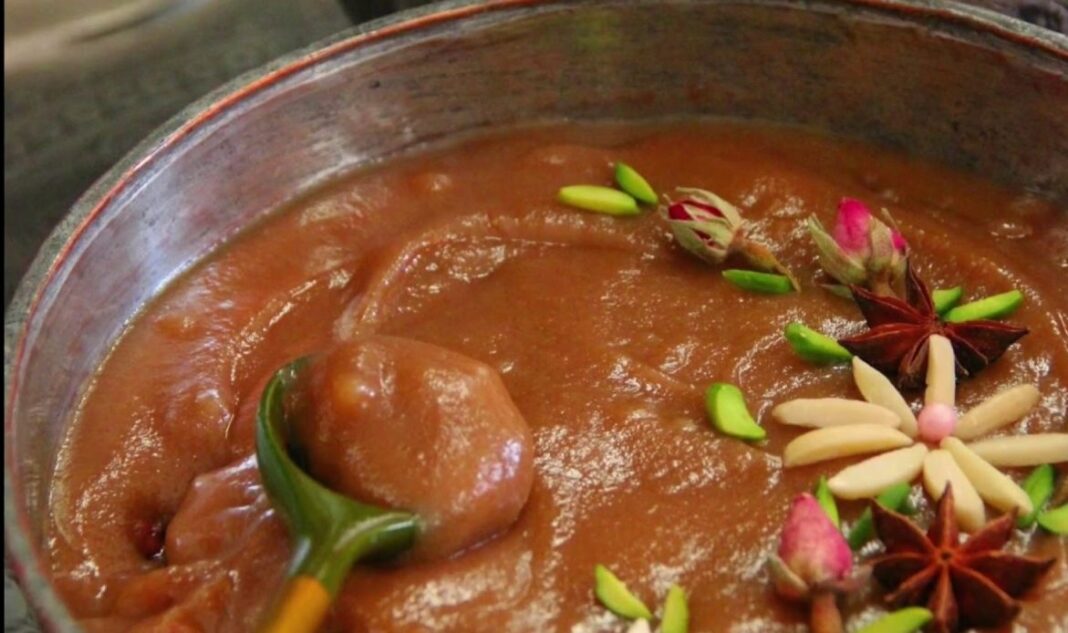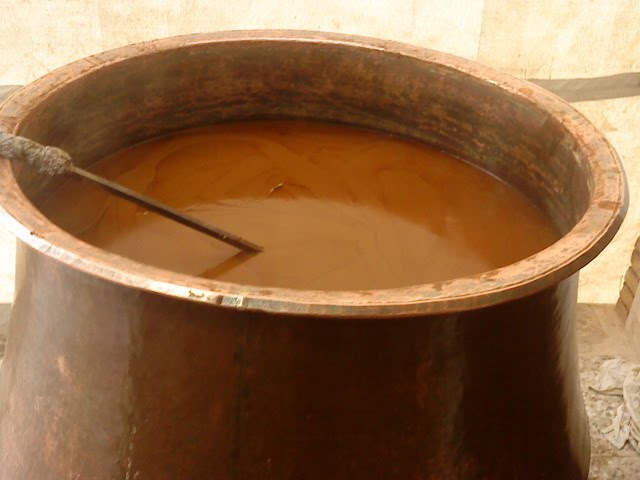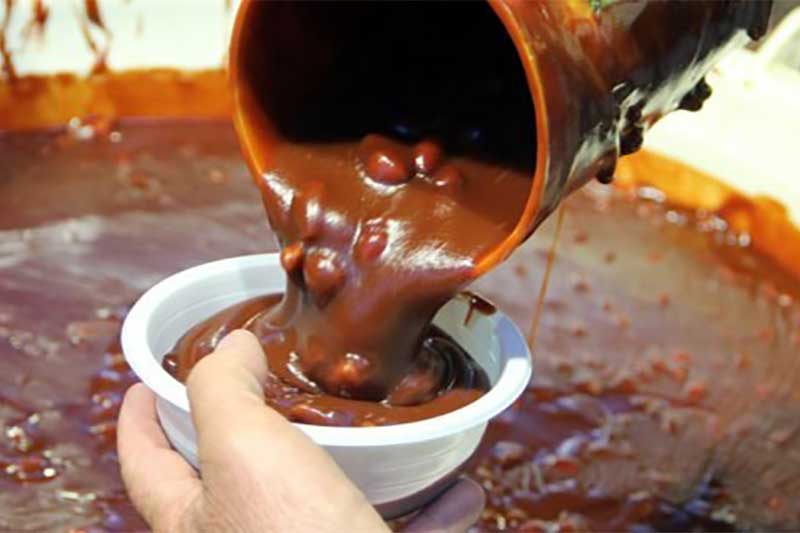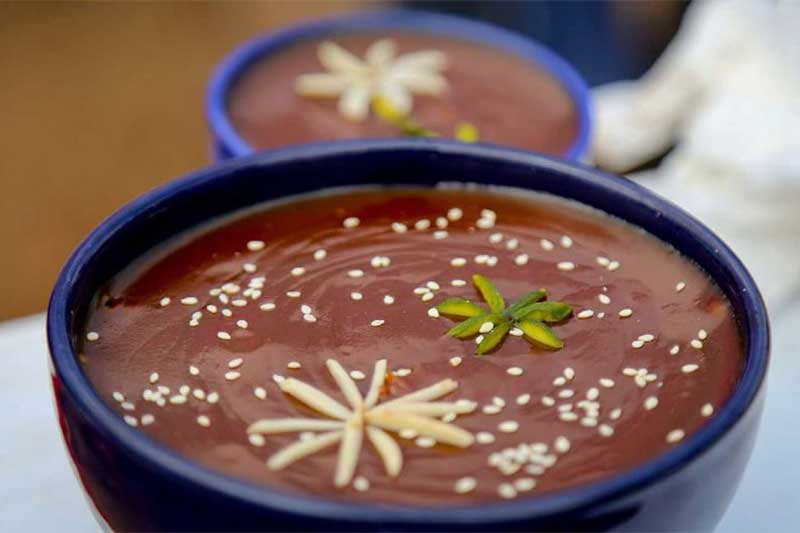Samanu, also called Samanak or Somalak, is a type of sticky sweet food made of wheat germ and flour. History shows Samanu originates from today’s Khorasan, northeastern Iran. It is referred to as a “blessing on earth” and is usually cooked in the first month of spring as an item on the Haft-Sin table.
Annually on March 20 or 21, Iranian people celebrate the beginning of the Persian New Year, known as Nowruz. Just like other people around the world, people in Iran cook their own traditional foods to mark the arrival of spring and the beginning of their new year.
According to a Farsi report by Sarzamin-e Man magazine, among the main traditional dishes prepared and served on the eve or first day of Nowruz are Samanu (an Iranian sweet paste made entirely from germinated wheat), Sabzi Polo Ba Mahi (a mixture of rice and chopped herbs with fried fish), Kaak (a pastry and souvenir of the western Iranian province of Kermanshah), and Reshteh Polo (thin noodles with rice).
What follows is a brief historical background of Samanu and why it are served on the eve or first day of Nowruz as well as the recipe and instructions for cooking it:
Samanu; Sweet and Historical
Samanu is one of the items included in the traditional Iranian Haft-Seen(wikipedia) (literally seven Ss), a table-top arrangement of seven symbolic items [the first letter of which is ‘S’] traditionally displayed at Nowruz. Samanu is sweet, delicious and nutritious, and very popular among Iranians.
The first documents or evidence concerning the making of Samanu, reportedly, date back to the Sassanid Empire (224-651 AD). These evidence and documents confirm that Samanu has always been a religious food and made for a specific ritual. A large number of the anthropologists who have studied the food item from a religious point of view maintain that the religious dimensions and aspects of the stages involved in making Samanu gained greater significance following the entry of Islam into Iran,
particularly, during the Safavid dynasty (1501-1722).

Benefits of Samanu
1. Since Samanu is rich in calcium and potassium, the elderly and those suffering from osteoporosis are recommended to place a balanced amount of the food on their diets.
2. There is a considerable quantity of phosphorus in Samanu and it is beneficial for brain growth in children and for women who breastfeed. Iron, folic acid, and the B-family vitamins existing in the food can contribute to the production of blood cells and hormonal balance and calm nerves. If sweet almonds are used in the cooking process, the food will become even more nutritious.
3. During the germination process, the vitamins and minerals in wheat increases several times and, on the contrary, the amount of calories and carbohydrate decreases. The protein will also be better digestible and the Vitamin C amount will be boosted.
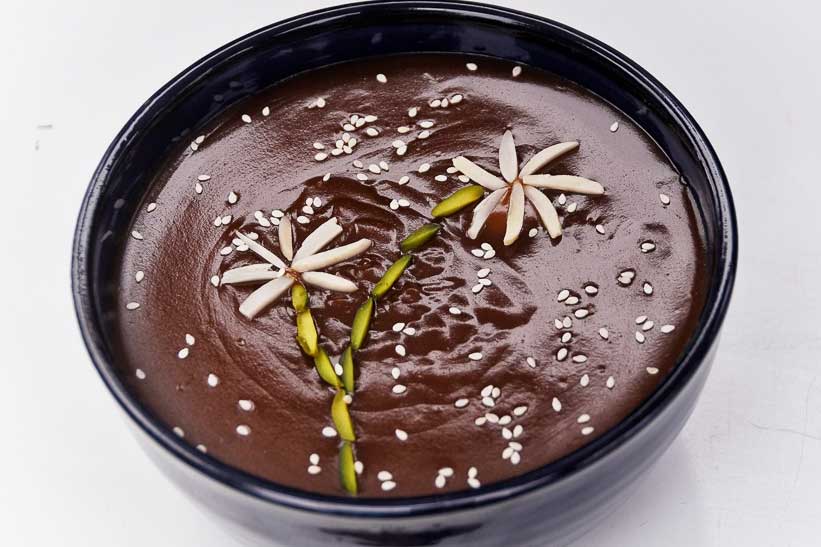
4. It is recommended for women to have Samanu during the first three months of pregnancy because the food helps promote the development of the embryo’s nerve system and bones.
5. Samanu is rich in iron and helps cure anemia in pregnant women. It also prevents constipation during pregnancy.
The recipe of the comestible has been subject to a number of small changes. Most probably, the recipe used today has been handed down from Qajar era (1785 to 1925). Some 2,000 years have elapsed since Iranian first made Samanu, and the food has kept being served as the main dish in many Iranian religious as well as traditional ceremonies, such as Nowruz.
Since the process of making Samanu is quite time-taking, many buy it ready-made. However, if enough patience is shown, the ancient food item can be prepared at home using a simple recipe.
Ingredients for Samanu
- Wheat grain seeds (one kilogram)
- whole-wheat flour (three kilograms)
- nuts (any desired amount or kind)
Samanu Recipe
To prepare Samanu, primarily, the wheat sprouts’ sap is required to be extracted. After being winnowed, the wheat grain seeds should be poured in a bowl full of water to be soaked.
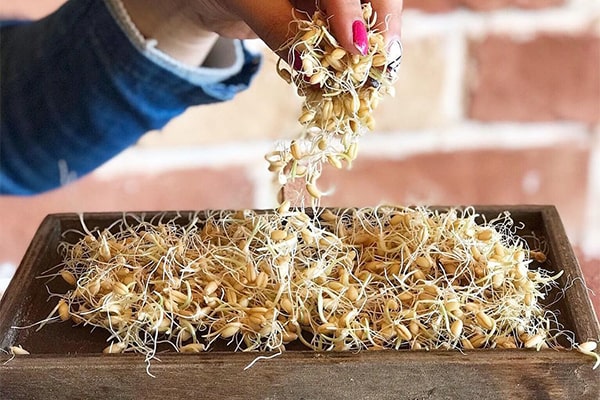
The cloth also needs to be wetted [preferably with cold water] for two or three times a day to speed up the process of sprouting. It takes approximately one week for grain seeds to become ready for sap extraction.
After sprouting, the grain seeds should be washed and, then, mashed for as long as they turn into paste. They can even be ground.
The paste, then, should be sifted to extract its sap. To accelerate sap extraction, the paste can be well-mixed with some water before sifting. Then, the paste should be strained [through a sieve] until its sap is extracted. Great care should be taken to extract all the sap, as it is what sweetens Samanu.
Next, the flour should be poured in a stock pot and the sap must be added to it. Stirring is required to solve the flour in the sap and turn it into a thin liquid.
Then the stock pot should be put on the stove and be heated until the fluid [in it] boils and gradually becomes thicker. While heating, the fluid is required to be stirred constantly, otherwise, it will stick to the bottom of the stock pot, burns and turns into Halva (a dense, sweet confection served across the Middle East and many other places).
When the water of Samanu was drained through evaporation, a little bit more heating will be required. Adding some cold water to it at this stage will make it thinner and look brighter. Following that, Samanu is required to be poured into a bowl and be heated in an oven, or on a gas stove, with a slow flame for 30 minutes until it is prepared.
Samanu can be served in any desired dish or ornamented with chopped pistachios and almonds.
Samanu Contraindications
1. Overweight people who engage in little activity should not have too much Samanu.
2. Eating too much Samanu leads to stomach bloating in some people.
3. People with a cold temperament should not have Samanu.
Do people in other countries cook Samanu?
Samanu dates back centuries and is prepared for celebrations or national and religious ceremonies in different countries such as the Republic of Azerbaijan, Kirgizstan, Tajikistan, and Afghanistan.
The Tajiks and the Afghans call it Samanak. It may sound interesting that the Finnish also cook Samanu.
Every year, people in Daraq in Iran’s Northern Khorasan hold a Samanu-cooking ceremony in the month before spring and mainly export the food to Arab countries, Europe and East Asia. You can also buy ready-made Samanu.
Related Post:
